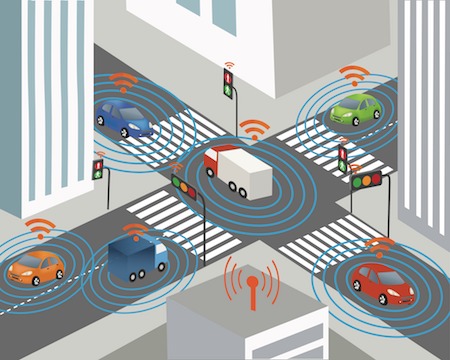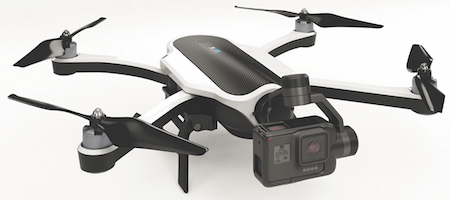Regulatory Reform
Important checks and balances must be developed alongside the pathway to driverless vehicles. Taking a sensible approach to regulatory reform is vital – too much, too soon could be damaging. The current UK legal and regulatory framework for vehicles and road safety is extensive. It has evolved over many years, reflecting developments in the UK automotive industry and safety requirements and the UK’s obligations under EU legislation and UN regulation. The majority of the UK’s domestic regulatory framework anticipates the existence of a “driver” who is in control of the vehicle at all times. Given the ultimate aim is to provide for technology that allows for transportation without any need for a driver, the framework must be adapted.
We support wholeheartedly the Government’s intention to keep regulatory reform under constant review as the technology evolves. Providing for an ongoing and agile regulatory review means that, as far as is possible, long-term technological change is anticipated. This will ensure that future regulatory change is seamless and occurs only when necessary to reflect a major leap in technological advancement.
While we agree that the UK has the capability to adapt its legal and regulatory framework to accommodate the development of this technology, it is too early to redesign insurance law to take account of driverless vehicles. Amending the Road Traffic Act 1988 to extend compulsory cover to product liability will, in our view, suffice for now.
In time, we have every confidence that highly or fully autonomous vehicles will be considered a different class of vehicle requiring additional compulsory cover. It is most likely that one go-to entity will provide all necessary cover – rather than a set of entities – and that such requirements can be encapsulated in a single piece of legislation.
Legal Practice Reform
Looking at how driverless vehicles might impact defendant legal practice is an important strand to developing this technology. Such an aim must go hand in hand with causing as little disruption to legal practice/justice system as possible, not least due to the risk of legal-cost generation – an aim which the current and previous Government has worked so hard to address.
The Government should also be alive to and explore now the discussion point as to whether claims involving autonomous vehicles are suitable to go through the online Claims Portal, which facilitates the process of low value personal injury claims covered by the Ministry of Justice’s pre-action protocols.
As the Government is aware, there are costs benefits of claims remaining in the Claims Portal. However, based on the experience to date, and despite best (and ongoing) efforts to achieve a proportionate and fair claims process, we anticipate that claimant solicitors will look to keep automated vehicle road traffic accident (RTA) claims out of the Claims Portal for cost purposes. Claimant firms will pursue claims on the basis that they do not contain solely a negligence issue vis-à-vis the defendant and there could be issues of product liability, allegations of potential defects with the vehicle which would (under the current rules) render these types of claims as complex and, therefore, not fit for the Claims Portal.
In our view, as a defendant firm, there is no reason why claims involving vehicles that make use of automated vehicle technology cannot remain within the Claims Portal. The defendant’s default position would be that the Portal should continue to apply to all low value RTA claims (up to £25,000) unless the claimant suggests otherwise i.e. an allegation of defective product.
Connecting Roads With Cars
A possible future scenario is that motorways, high level A-roads and city centres become fully connected. Within that connected environment, leased type fully-autonomous vehicles (with combined motor and product liability insurance in place) could be used with low insurance costs because of the resultant safety improvements. The lease cost of the vehicle would include the cost of the insurance. For those who live in a city and only use public transport to travel further afield, this option could be an attractive and low cost travel option.
Within such a scenario, individuals or organisations could also choose to use semi-autonomous vehicles, for example because of the need to travel in rural and unconnected areas. Such vehicles could continue to be insured as now, using compulsory motor insurance (based on existing risk ratings) and supplemented by manufacturer product liability policies (to the extent that driver assistance technology needs to be covered).
However, when such semi-autonomous vehicles entered a fully connected area (e.g. a city centre or motorway) vehicle users’ insurance could switch to an integrated and connected policy for which there would be a charge (similar to the congestion zone or toll road charging). The connected zones would need to be well publicised.
Insurance Costs
Initially, underwriting risk for such vehicles will be difficult and take several years to form an accurate pricing model based on established levels of first and third party claims, frequency of claims and so forth. Underwriters will need to build up a body of data on which to assess accurately the risk, whilst bearing in mind that the full benefit of AVT vehicles (in terms of accident reduction etc.) will not be seen until a significant number of vehicles on the road are deploying such systems.
As underwriters’ experience of these products increases, the cost of insurance premiums for AVT vehicles is likely to become roughly equivalent to conventional vehicles. In the long term, as the larger proportion of vehicles on the road become AVT, it is most likely that the cost of insuring conventional vehicles will escalate considerably.
Conventional vehicles will not be able to communicate with the connected road systems or other vehicles. When the road system is less mixed (between various levels of manual and AVT) and AVT dominates, conventional vehicles will almost certainly be considered the bigger risk to underwrite, on the sound assumption that AVT vehicles in that environment will be safer to drive and more reliable.
A New Highway Code?
An entirely separate section in the Highway Code for semi-autonomous/driverless cars is required, rather than amending the current applicable Rules to provide a detailed explanation and avoid any confusion.
The current underlying message in Rule 150 is that the driver should not be distracted, should use in-vehicle systems responsibly and exercise proper control of the vehicle at all times. These principles should remain at the forefront of Rule 150.
However, Rule 150 will need to be extended to include an explanation of Advanced Driver Assistance Systems (ADAS), such as motorway assist or remote control parking. With remote control parking for example, the driver can be outside the vehicle using the remote control and will be relying on the driver assistance system. Rule 150 will need to be updated further as and when more advanced automated systems are approved and become more widely available.
The text pertaining to Rule 160, which requires drivers to have both hands on the wheel, will need to be amended to cater for situations such as remote control parking where it will be impossible for the driver to have their hands on the steering wheel as they can be outside the vehicle.
Whilst we acknowledge there are potential benefits of cars travelling very closely together or platooning (improved fuel economy and improved traffic capacity), the “vehicle to vehicle” (V2V) communication system which allows vehicles to automatically maintain a safe headway is still in its infancy and is not widely used. If platooning is to be introduced into the Highway Code, it could be introduced as an extension of the Highway Code providing a separate rule for vehicles specifically fitted with V2V communication systems.
We share the concern that relaxing Rule 126 to reduce the recommended vehicle separation may lead to drivers of vehicles without a V2V system failing to leave enough stopping distances between them and the vehicle in front, thereby causing more accidents. We also need to be mindful of the fact that vehicles with V2V communication systems are being sold to customers who may not have a full understanding of their aptitudes and limits.
There are other related concerns with regulations currently governing use of hand held devices, remote parking and use of information screens inside vehicles. Research has confirmed that drivers who divide their attention, because they are on their phone or otherwise distracted, are significantly increasing the risk of a crash. Further, drivers who have been distracted underestimate the effects that distraction has on them in being able to quickly refocus on driving tasks, control their speed or spot hazards.
Given the early stages of this technology, it is imperative that drivers remain focused on the task of driving at all times whilst using ADAS and semi-autonomous systems. The suggested requirement for the driver/user to “touch wheel” at regular intervals, such as every three minutes, and the possibility of sudden hand-back of control to the driver should be a minimum requirement.
The technology to ensure active and focussed compliance with such requirements will be challenging. The technology to monitor when or if the driver is in active control will be essential for the regulatory and statutory framework.
As drivers relinquish more and more driving function to autonomous systems, the monitoring systems need to step up to match that and the protocols for handover and hand-back need to be ever clearer. Taking the experience of pilots using autonomous systems on aircraft, the more autonomous systems are in play and in control, the longer the period of handover/hand-back will take.
More Consultation
Input into the process by industry stakeholders is vital and must be ongoing. We, therefore, urge the Government to create an industry-wide group that would advise ministers and civil servants on how the technology is developing to inform their thinking on how regulation needs to change with it. One of the main objectives of such a group should be to reach a consensus on what type of vehicles are likely to arrive on the UK market over, say, the next 10 years. This would greatly assist the government with regulatory planning.
Kennedys is an international law firm with specialist expertise in litigation/dispute resolution and advisory services. With a presence across Asia, Europe, the Middle East and Latin America, its growing network of offices delivers straightforward legal solutions to the insurance, corporate and public sectors.
www.kennedyslaw.com


.jpg)
.jpg)
.jpg)

.jpg)




